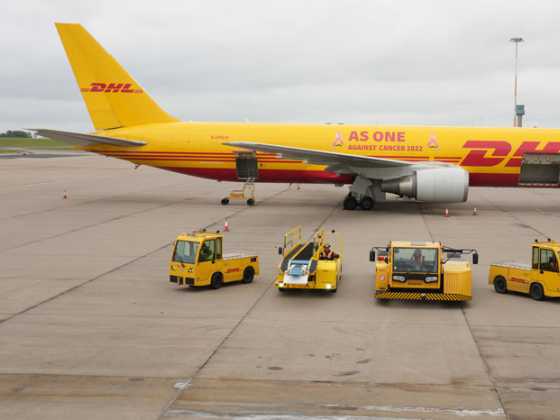Raising safety to the top of the agenda
Having a ‘safety culture’ within an organisation is just as important as having a written road risk policy for ensuring driver safety
 Written by Andrew Howard, head of road safety at the Automobile Association.
Written by Andrew Howard, head of road safety at the Automobile Association.
Businesses have a duty of care to people who use the roads. This means they have to think about the dangers that driving poses to their employees, and the danger that their employees on the road pose to other road users. A number of high profile collisions and law changes have raised occupational road safety right up the agenda. As a result, more and more companies are taking their duty of care to people using the roads very seriously.
One of the main reasons for this has been the changed corporate manslaughter laws, which mean that directors and managers are far more likely to face action if their drivers are involved in fatal accidents than ever before. But law changes that make prison more likely for drivers who kill make a difference too. A driver may take points or a fine when he really blames the company, but a prison sentence is another thing.
Many companies are now taking a real interest in ensuring that their drivers have licences, are properly trained to do their jobs, and are driving properly. But many others are not, or are trying and failing.
It is hard to define ‘driving for work.’ But it is frequently stated that people driving for work are responsible for about one in three road accidents. If this is the case some 800 people a year are killed because of people driving for work.
Policy and culture
Many people will say that the key to a company’s safety on the roads is its road risk policy. The policy is the statement that says what the company will do to ensure, as much as it can, the safety of its drivers. But in reality, it is not the most important aspect. The company’s safety culture is also key.
If safety is looked upon as paramount throughout the company, many of the road safety issues will be easily taken in its stride. This is why chemical companies tend to lead the way. If the employees understand that not blowing up the refinery is more important than taking a short cut, it isn’t hard for them to realise that doing 60 in a 30 because you are late isn’t acceptable either. But there are other industries where risk is looked upon very differently. So the culture is the first step. And if there is no safety culture, the likelihood is that the policy will be ignored.
Causes of road collisions
Collisions involving drivers at work can be divided broadly into three groups.
Most attention is paid to those where the company is at fault. Where drivers have been pressured into taking risks when they shouldn’t. Or where adequate care has not been taken in who companies employ to drive for them, when and where. What they drive also comes into the equation. Companies have to look to eliminate collisions of this type and good communication with their staff is vital.
But sometimes it’s the driver that chooses not to do what the company wants – sometimes because of poor communications, sometimes because they believe they are expected to take risks in spite of the policy or sometimes because meeting the policy does not fit in with their own lives. Companies need to realise that however hard they are trying there will be employees who will try not to comply.
Finally there are the collisions that mild mannered motorists will always have. Ultimately we all make mistakes occasionally and sometimes things happen that are wholly beyond our control. But a trained, alert and unstressed driver is less likely to make this kind of error.
Company clangers
Every company should have a road safety policy. It should be agreed by the board and communicated to all employees. It should be monitored and updated regularly. It is a vital document and can be absolutely key if any employees are involved in a road accident while driving on business. This is because the driver may try to blame the company for requiring or expecting them to do something unsafe. Corporate manslaughter charges and prison could be the consequence. And police and health and safety inspectors can look at whether the company has played a role in causing the collision.
This policy should contain all the basic guidelines and rules for drivers. When will you check their licences? What will you do if they get points? How far should they drive in a day? How long should a working day be when driving is at both ends of the day? When will the company pay for an overnight stay? Are there any training requirements? How often should tyres etc, be checked and when will they be replaced? What should a driver do when delayed for a couple of hours and therefore hopelessly late? How should a driver react if he does not feel capable of doing the driving job he has been asked to? The list goes on much further and there is much information available from road safety organisations, especially Driving for Better Business, a government supported organisation.
It is important that the advice isn’t only addressed to those who drive company vehicles. It needs to get to everyone who drives for work, and that can include the person who takes their car to a conference or training course, or the clerk who diverts from her journey home to post a letter.
Communicating
Once a policy exists it has to be communicated. It is pointless if it is considered a back watching, paper exercise and relegated to a filing cabinet. It needs to go not only to all drivers, but also all managers and other employees. Even an unthinking secretary can lead to a driver having to drive when he really should not.
Equally important is that the policy is marketed to employees. Before they can comply they need to be known that the policy exists. In a study a few years ago managers and drivers from the same companies were interviewed and generally couldn’t agree on whether or not the company had a policy. Obviously these companies’ policies hadn’t been communicated very well to the staff they were meant to effect.
Employee expectations
Many driving employees feel under pressure from above. Many really are under pressure. One of the goals of a road risk policy should be to ensure that being safe is given greater weight than productivity, time keeping or saving money. If the policy isn’t communicated it won’t do that, especially if the historical, institutional approach to road safety within the company has not been good.
But even if it is communicated, it has to be believed. Drivers who have been brought up to believe “if you are late drive faster”, “you can’t stay away for the night”, “phone while you are driving” sometimes struggle when told to stick to the speed limit, not to drive for too long and only to use the mobile when stationary. Some won’t believe that it is meant, and rumours will certainly spread that it is not an attempt to make them safer, just a policy to keep the board out of prison. If that is what they believe then they won’t comply.
Of course road safety initiatives at work can cause problems to employees. Many don’t like staying away from home, or have to miss taking part in evening activities if they do so. It can be difficult to change plans when expected home and have to suddenly stay away for the night. Many drivers are understandably tempted to press on home regardless.
Leaving policies aside, there are a few things that every company can do:
- Stress the importance that drivers should never break the law because they believe that the company expects them to. And make sure that it is understood. This applies to hand held mobile phones too.
- Ban hand-held phone use and discourage or even ban hands-free phone use. Expect your drivers not to answer the phone. Having a fatal accident while on even a hands-free phone can send a driver to prison, and questions could be asked as to whether his employer was aiding and abetting the offence.
- Tell staff what the procedure should be when they are late for an important meeting or delivery. Also get the company to develop a corporate understanding that on the roads a delay is every bit as unavoidable as by train, boat or plane. There were over 1,700 hours of closure on Britain’s Motorways in six months of 2009. This excluded weather closures. And expect people coming to see you to be late.
- Understand that young drivers are a greater risk than middle-aged drivers. But also remember that irregular drivers have vastly different experiences and tolerances of different driving conditions. Irregular motorway users may be more stressed by situations that regular drivers consider normal. You could even have a driver who has never driven more than three miles from home. If someone has a licence and doesn’t drive, they can still say they have a full driving licence on the application form. Remember that many employees, suddenly asked to drive something they don’t feel comfortable with will do so anyway, just because they feel under pressure. Sometimes they may not even be licensed to drive that vehicle.
- Remember – stressed drivers aren’t safe drivers.






